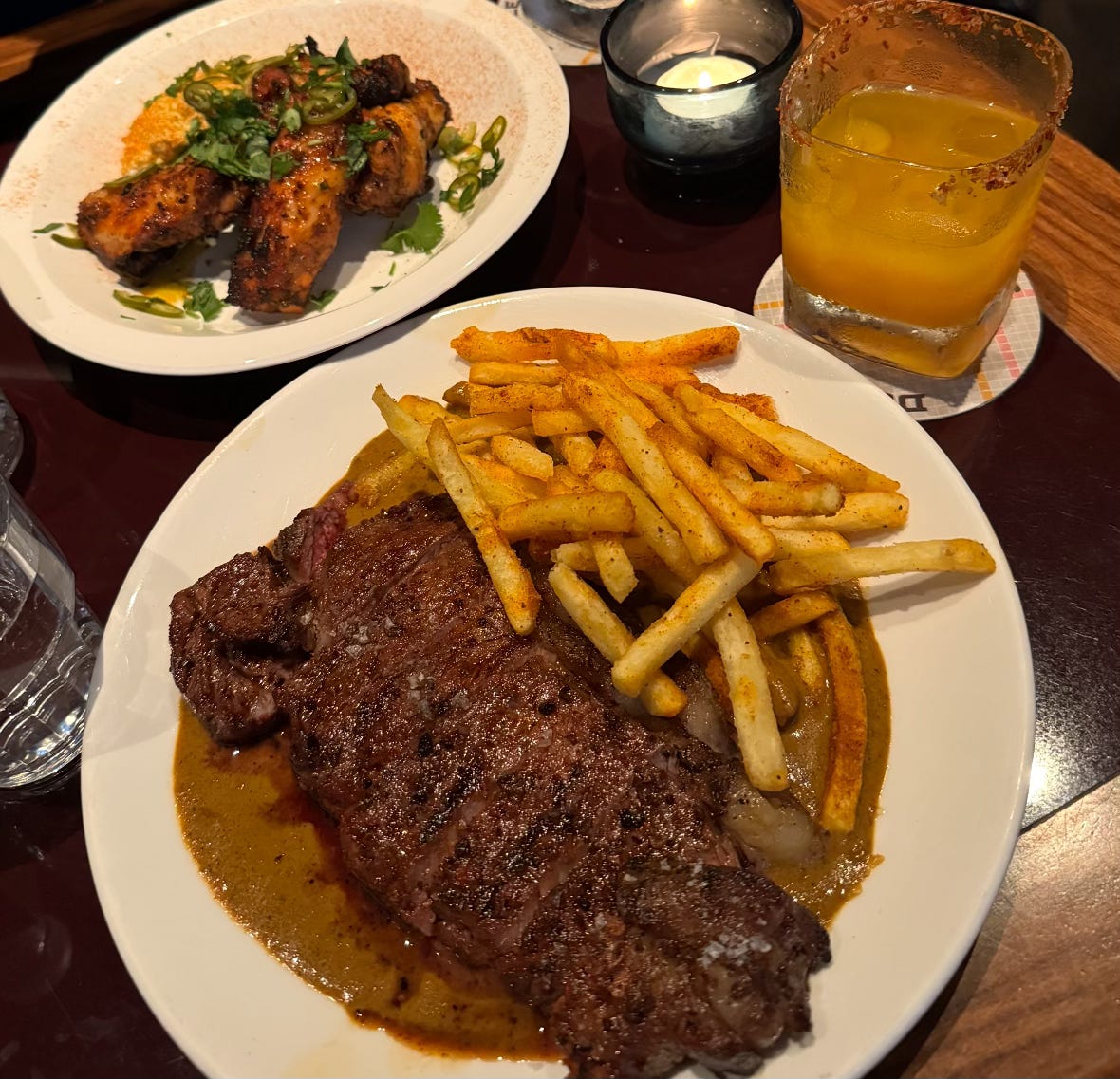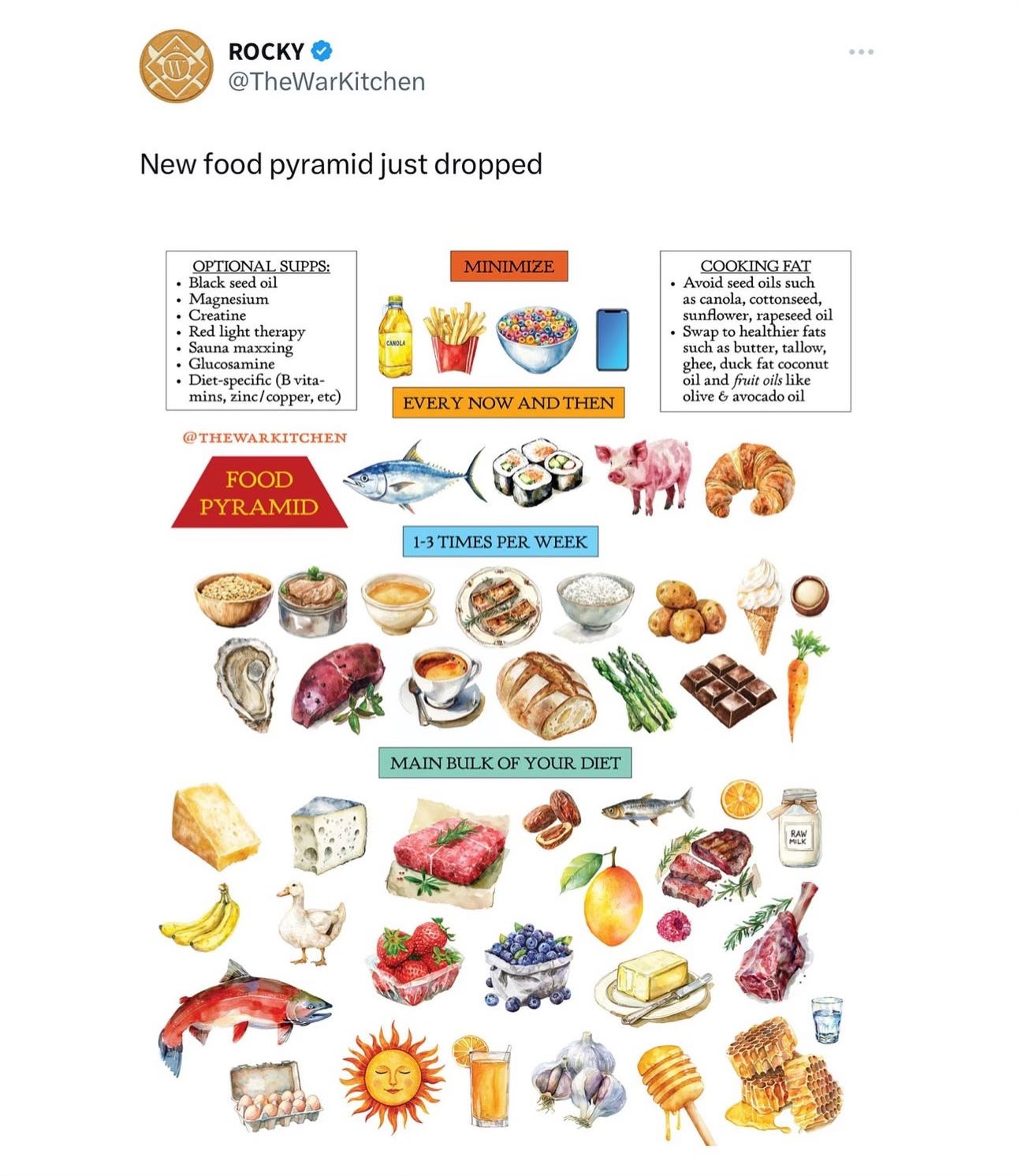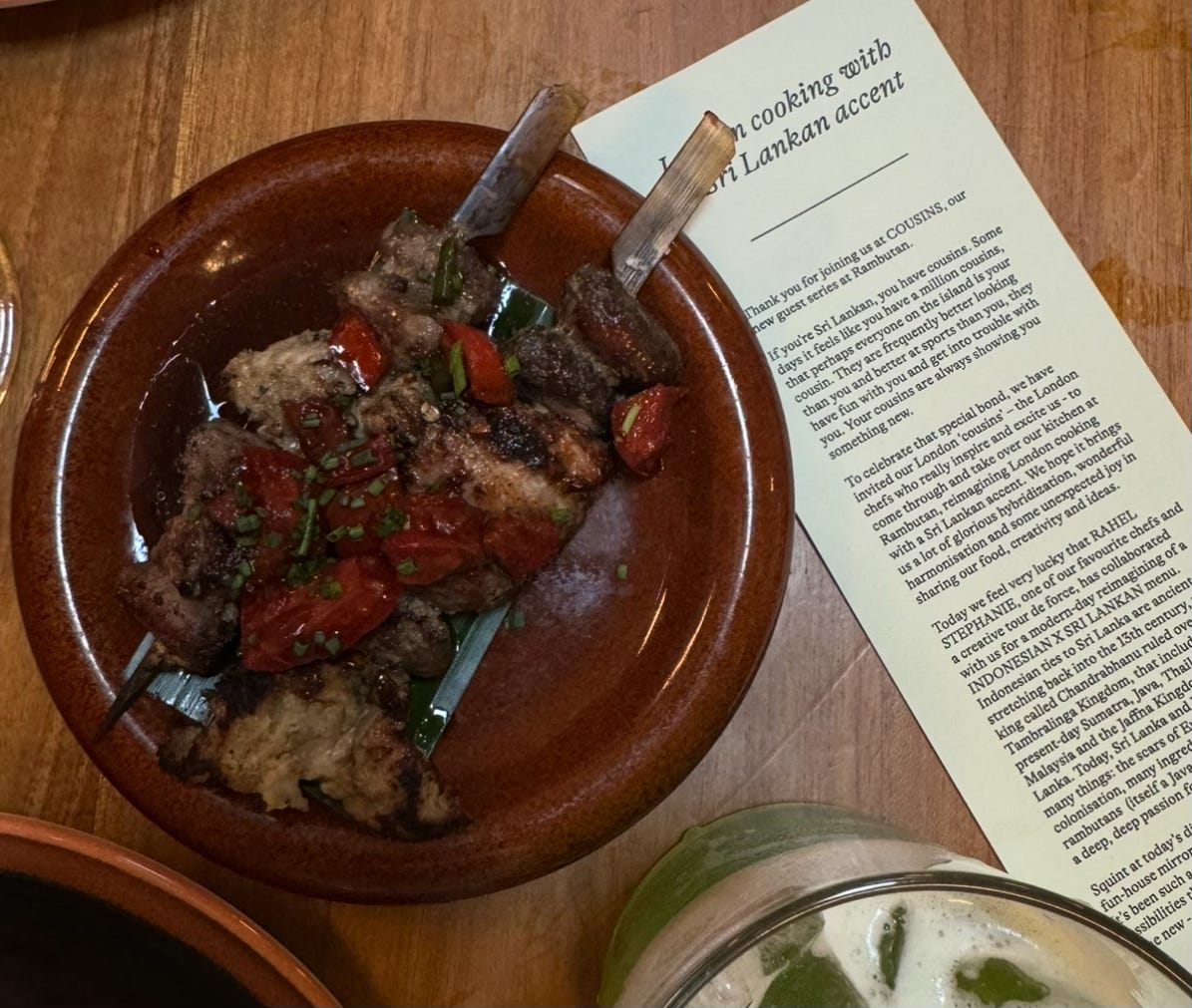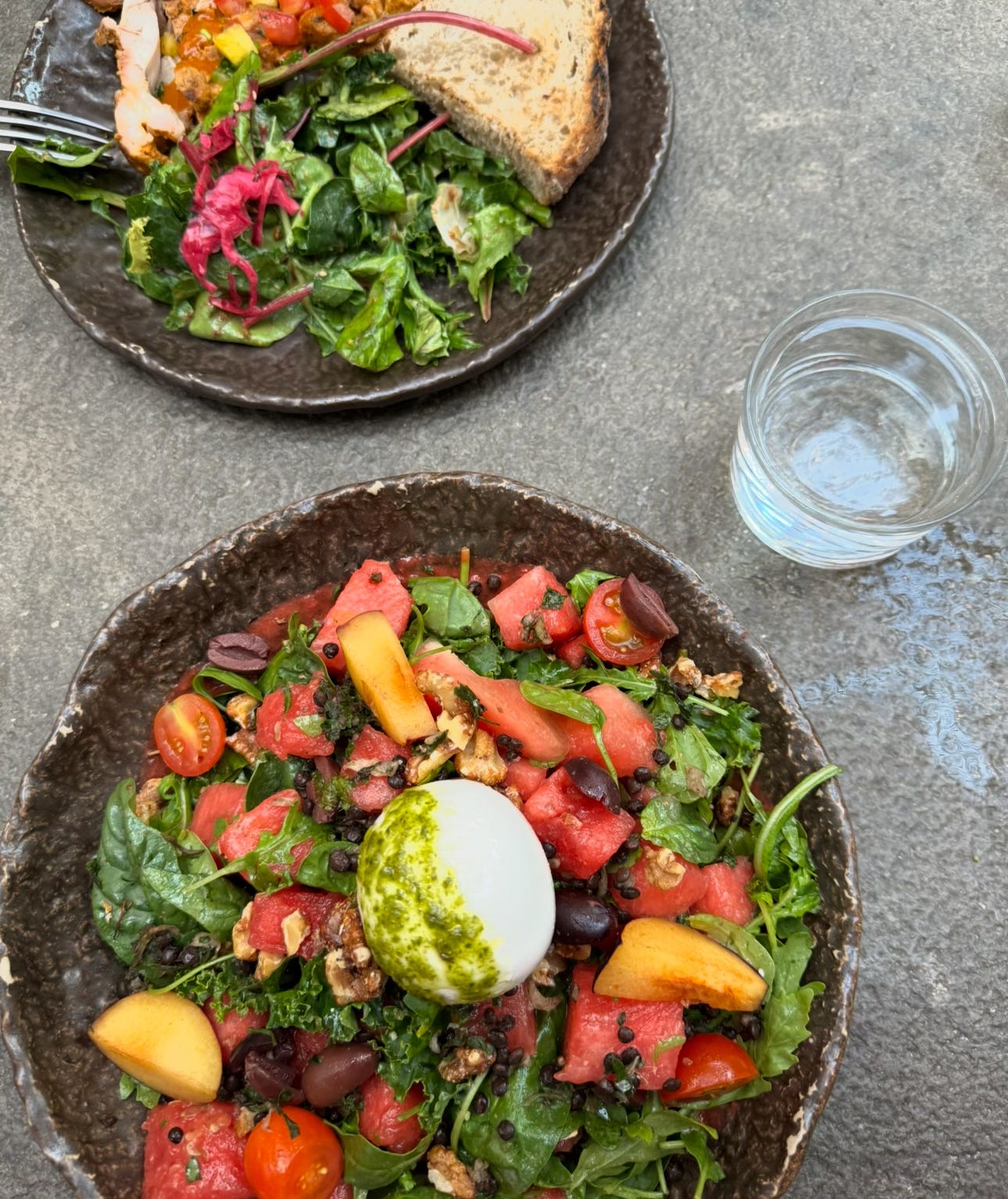Small Plates, Natty wines. Chef residencies. Fusion Pop-ups. I have to admit, typically what draws me out for a meal. Ironic, considering there was a time I'd get annoyed at my mum adding masala powder to our pasta or I wouldn’t dream of taking home food in for lunch.
When we think about food, we often juggle competing ideas - staying healthy, preserving cultural traditions, and modern lifestyles plus keeping up with public health guidelines. How do I be a gym girlie and count macros with home food? How can I be content with my studying and diet simultaneously without a Nara Smith scratch-cooking lifestyle? For many in multicultural communities, these ideas collide on our plates every day, especially as we live at home longer or move back in with our parents.
As I’ve grown though, I’ve come to appreciate that food is both personal and practical, much more than fuel. People don’t just eat for sustenance—they eat for comfort, community, and cultural continuity.

I’m South Asian. I’m most likely going to be diabetic. My parents are already diabetic. But why?
I often think about the intersection of my cultural diet and my family’s health history. Research shows that South Asians have higher body fat percentages and increased visceral fat compared to Europeans, even at similar BMIs. This predisposition significantly raises our risk for diabetes, heart disease, and other metabolic conditions. Despite lower levels of "bad" cholesterol (LDL), South Asians face a heightened risk of heart disease due to smaller, less effective "good" cholesterol (HDL) particles, elevated triglycerides, and higher levels of genetically inherited Lipoprotein(a).
Dietary patterns rich in simple carbohydrates, fried foods, and sweets, combined with sedentary lifestyles, contribute to higher rates of metabolic syndrome and diabetes in this population. First-generation immigrants, in particular, often experience long working hours and stress, exacerbating inactivity. Cultural perceptions of body weight, especially stigma around overweight women, can lead to mental health issues, making weight management more challenging.
South Asians are 50% more likely to die prematurely from coronary heart disease (CHD) than the general population, and diabetes is six times more common in our communities. It’s not entirely clear why, but contributing factors include smoking, low physical activity, and diets high in fat and low in fruits and vegetables. That’s why making even small dietary changes can make a big difference.
Is Authenticity Essential in Cooking?
Ok, does eating well mean giving up beloved family recipes for lean proteins and salads? Not necessarily.
Rather than replacing food items entirely, we can look for healthy alternatives that preserve the essence of our traditional meals. Convincing my parents otherwise has been a process but instead of replacing our chapatis with something entirely foreign, we’ve started using wholemeal or medium-brown flour. We grill our chicken instead of frying it, switch from white rice to brown, and swap ghee for low-fat alternatives. These small changes let us keep the spirit of our culture alive - and keep them content. (Trust me, my parents go out for a meal and return home for a plate of rice because “it doesn't feel like” they've eaten without it).
There’s a lot of talk about authenticity in food, and it’s tempting to feel like we need to be "doing it right" to stay true to our cultural roots. But what does it mean to cook "authentically"? David Chang and Priya Krishna have both embraced a more relaxed, intuitive approach to cooking, one that prioritises practicality over perfection. In Cooking at Home: Or, How I Learned to Stop Worrying About Recipes (And Love My Microwave), they argue that sometimes it’s more important to get food on the table than to follow traditional recipes to the letter. And honestly, this resonates with me.
Growing up, there were countless times when I’d rush home between swimming and tuition, scarfing down a quickly heated frozen pizza because that’s what we had time for. It wasn’t glamorous, but it was practical—and that’s what mattered. But I still wish I’d been better educated on balance.
Anti-Obesity Policies: Where Culture and Health Collide
Back during my undergrad years, I collected some ethnographic data on chicken shops in Tower Hamlets to explore how cultural factors influence food choices. As a fast-growing borough, both culturally diverse and economically deprived areas in the UK, Tower Hamlets is also home to the largest Bangladeshi population in the UK, comprising 34.6% of the local community, or 107,333 residents. Inspired by the film Chicken (Knight, 2015), I asked, “Can an anthropological lens help us better understand individual food choices and create more effective anti-obesity policies?” The answer, I believe, is yes.
It is estimated that 20-30 per cent of the adult population in Tower Hamlets is clinically obese. The approach to tackling obesity often focuses solely on calories, nutritional data, and daily allowances. But this science-heavy perspective overlooks the deep social importance of food. For many residents, chicken shops are akin to the traditional English pub—places to socialise, relax, and even barter with the server, who is often affectionately referred to as “bossman” or “bhai saab.” These exchanges aren’t just about food but about connection and belonging. In this context, anti-obesity policies based on strict nutritional guidelines seem out of touch with the lived realities of the communities they’re trying to serve.
As we explore issues like early-onset cancers and dietary changes in public health, there’s a growing need for health messaging that’s both reliable and flexible. Molecular pathological epidemiologists, for example, are examining how lifestyle and dietary factors contribute to diseases like colorectal cancer, and it’s clear that a one-size-fits-all approach to diet and health won’t work. But when public health recommendations don’t account for these cultural and socioeconomic factors, they risk alienating the very people they’re meant to help.
The Bigger Picture: Beyond Blame
Parents and guardians play a critical role in shaping their children’s diets, and it’s easy to point fingers when things go wrong. But as children, we don’t choose the environments we grow up in, and it’s unfair to place all the blame for health issues like obesity on individuals. Public health strategies need to address the larger societal context, providing support and resources that make healthy lifestyles accessible to everyone. Adolescents, in particular, are shaped by unique influences as they develop greater autonomy over their diets. Research shows that the social and food environments adolescents navigate significantly influence their food decisions. Social interactions, often facilitated in fast-food outlets, are prioritised over the nutritional value of the food itself. Chain restaurants, with their familiar and heavily advertised menus, offer convenience and quick decision-making opportunities—appealing to adolescents’ desire for autonomy and minimal effort in choosing food.
Take online discourse, “mukbangs”. The original format was about communal eating and entertainment, the concept has evolved, with some content creators posting more casual “eat with me” or “have a meal with me” videos featuring average-sized meals. However, the more extreme mukbangs, where massive amounts of food are consumed in one sitting, have sparked concerns among dieticians and health professionals. Dieticians worry that these videos may promote unhealthy eating behaviours, encouraging overeating, normalising binge-eating, or even leading viewers to avoid certain foods, ultimately resulting in unbalanced diets.
This raises an important question: where does responsibility lie? Is it up to the content creators, platforms, or the viewers themselves to navigate these potential risks? I guess without the risk of pushing for individualism, viewers do need to be responsible for how they consume content and how it influences their behaviour.
In the end, food is culture, and it’s always evolving. Our public health messaging needs to evolve with it, meeting people where they are and offering practical, inclusive advice that works for diverse communities. Whether it’s swapping white rice for brown or redefining what it means to cook "authentically," the goal is the same: to help people lead healthier lives without losing the essence of who they are.






